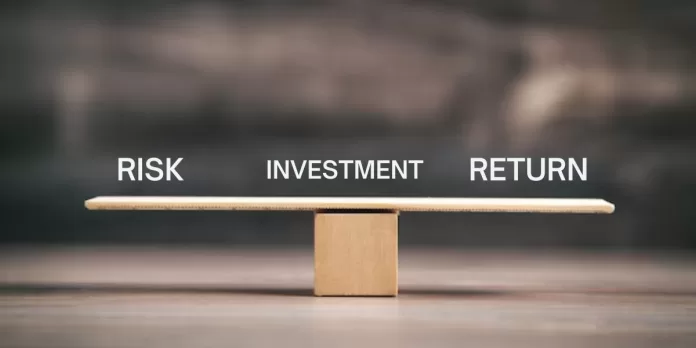Investing can be a complex and daunting journey, with one of the fundamental principles at its core being the trade-off between risk and return. As an investor, understanding this delicate balance is crucial to make informed decisions and maximize your financial growth.
Read: Mastering Growth Investing
Risk and Returns Defined
Risk and returns are the two pillars that underpin the investment world. Let’s break down these concepts:
- Risk: Risk refers to the potential of losing money or receiving lower returns than expected. It is an inherent part of investing, as no investment is entirely risk-free. Different assets carry varying levels of risk. Generally, higher-risk investments have the potential for greater rewards, but they also come with a higher chance of losing money.
- Returns: Returns represent the financial gains or losses you receive from your investments. They can take the form of capital appreciation (an increase in the asset’s value) or income (such as dividends or interest payments).
The Risk-Return Trade-off
The relationship between risk and returns can be summarized by the principle of the risk-return trade-off. In essence, the greater the risk you are willing to take, the higher the potential returns you can expect. However, this relationship is not linear and is subject to various factors, including your investment goals, time horizon, and risk tolerance.
To better understand this trade-off, consider the following examples:
Low-Risk, Low-Return Investments:
Savings Accounts
These are some of the safest investments, offering minimal risk to your principal amount. However, the returns are generally very low, often failing to keep pace with inflation. For example, if you invest Rs. 10,000 in a savings account with a 0.5% interest rate, you will earn just Rs. 50 in a year.
Moderate-Risk, Moderate-Return Investments:
Bonds
Bonds are generally considered less risky than stocks. They offer fixed interest payments and return your principal amount at maturity. While they are relatively safe, they yield moderate returns. For instance, a 10-year government bond with a 3% yield will provide you with Rs. 300 annually on a Rs. 10,000 investment.
Know: Bonds: A Great Way To Invest For Income & Safety
High-Risk, High-Return Investments:
Stocks
Investing in individual stocks can be riskier, as their prices can be volatile. However, they have the potential for substantial capital appreciation. Suppose you invest Rs. 10,000 in a tech company’s stock, and it grows by 10% in a year; you’ll gain Rs. 1,000 in capital appreciation alone.
Very High-Risk, Potentially Very High-Return Investments:
Start-up Equity
Investing in start-ups or early-stage companies carries substantial risk, as many of these ventures fail. However, if you invest Rs. 10,000 in a successful start-up that gets acquired or goes public, your returns could be significantly higher, potentially even several times your initial investment.
Balancing Risk and Returns
The key to successful investing is finding the right balance between risk and returns. Here are some tips to help you achieve this balance:
Diversify Your Portfolio
Spreading your investments across various asset classes, such as stocks, bonds, real estate, and cash, can help reduce overall risk. Diversification can be a powerful tool for managing risk without sacrificing returns.
Assess Your Risk Tolerance
Understand your own risk tolerance and investment goals. Some investors are comfortable with high-risk, high-return investments, while others prefer a more conservative approach. Your investment strategy should align with your individual circumstances.
Consider Your Time Horizon
Your investment time horizon plays a critical role in the risk-return equation. Long-term investors can often afford to take on more risk, as they have time to weather market fluctuations.
Stay Informed
Continuously educate yourself about the assets you are investing in. Understanding the factors that influence risk and returns within each asset class will enable you to make more informed decisions.
Conclusion
Balancing risk and returns is an art that every investor must master. The path you choose depends on your financial goals, risk tolerance, and investment horizon. Remember that there is no one-size-fits-all solution. It’s essential to assess your individual circumstances and seek professional advice when needed. Investing is not solely about maximizing returns, it’s about finding the right equilibrium between risk and reward.
Disclaimer: This blog has been written exclusively for educational purposes. The securities mentioned are only examples and not recommendations. It is based on several secondary sources on the internet and is subject to changes. Please consult an expert before making related decisions.


